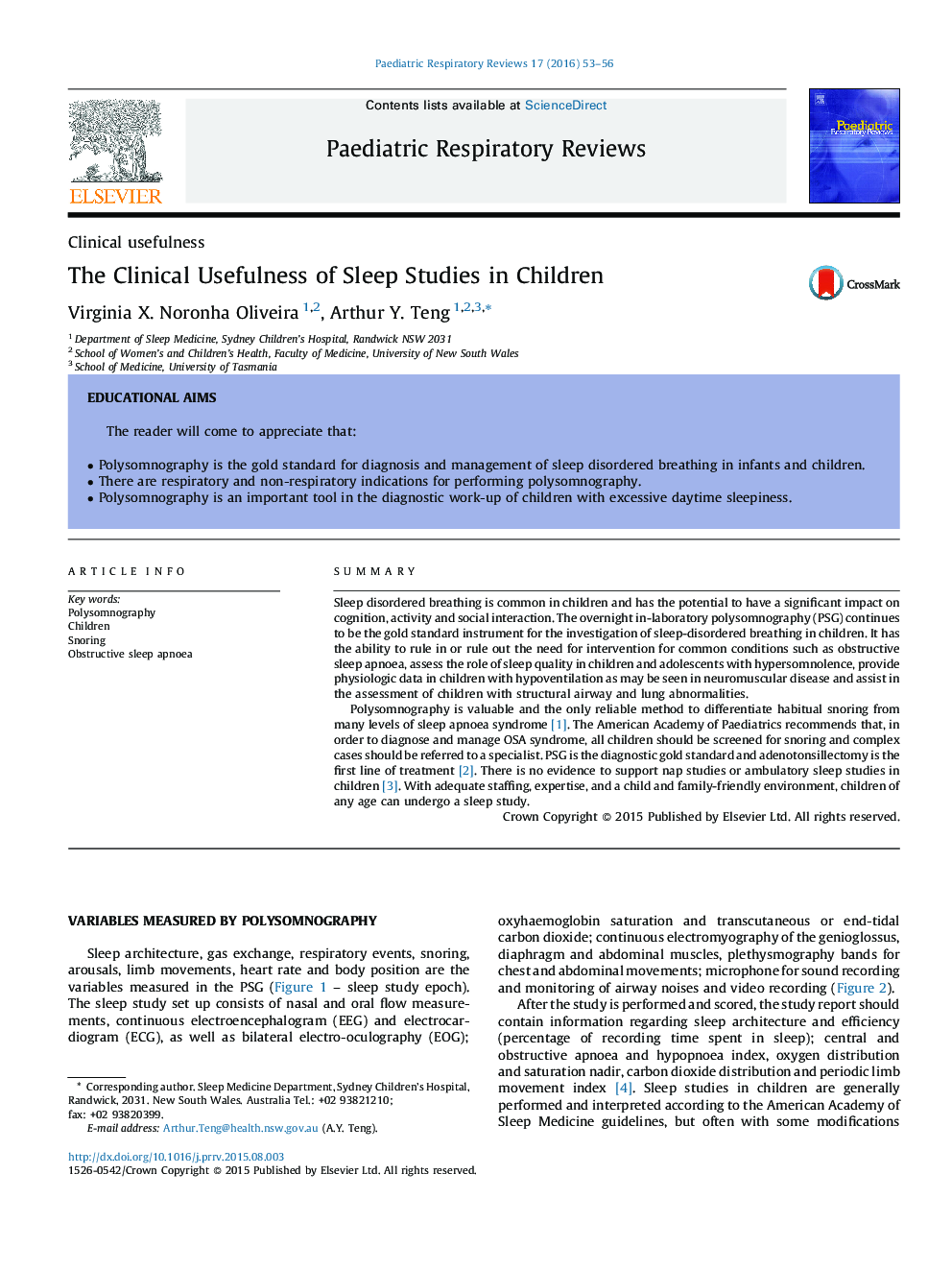| Article ID | Journal | Published Year | Pages | File Type |
|---|---|---|---|---|
| 4170846 | Paediatric Respiratory Reviews | 2016 | 4 Pages |
SummarySleep disordered breathing is common in children and has the potential to have a significant impact on cognition, activity and social interaction. The overnight in-laboratory polysomnography (PSG) continues to be the gold standard instrument for the investigation of sleep-disordered breathing in children. It has the ability to rule in or rule out the need for intervention for common conditions such as obstructive sleep apnoea, assess the role of sleep quality in children and adolescents with hypersomnolence, provide physiologic data in children with hypoventilation as may be seen in neuromuscular disease and assist in the assessment of children with structural airway and lung abnormalities.Polysomnography is valuable and the only reliable method to differentiate habitual snoring from many levels of sleep apnoea syndrome [1]. The American Academy of Paediatrics recommends that, in order to diagnose and manage OSA syndrome, all children should be screened for snoring and complex cases should be referred to a specialist. PSG is the diagnostic gold standard and adenotonsillectomy is the first line of treatment [2]. There is no evidence to support nap studies or ambulatory sleep studies in children [3]. With adequate staffing, expertise, and a child and family-friendly environment, children of any age can undergo a sleep study.
